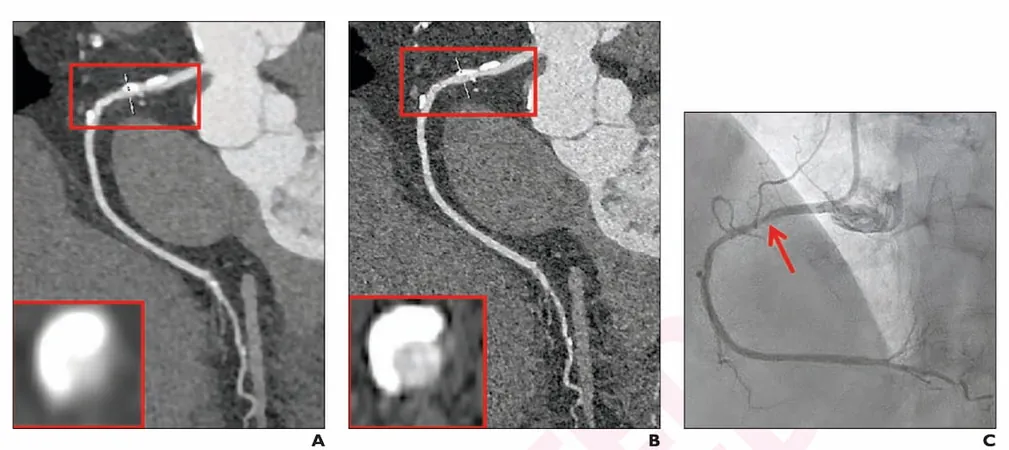
Revolutionary Photon-Counting CTA Outshines Traditional Methods in Detecting Heart Blockages!
2025-07-10
Author: Siti
A groundbreaking study reveals that photon-counting computed tomography angiography (CCTA) could be a game changer in diagnosing coronary artery stenosis, boasting over 90% sensitivity, specificity, and accuracy.
What is Photon-Counting CTA?
This innovative imaging technique uses advanced photon-counting detector technology to deliver unmatched precision in assessing heart conditions. A recent study, published in the prestigious American Journal of Roentgenology, compared standard resolution (SR) and ultra-high resolution (UHR) in 122 inpatients, analyzing a total of 1,613 segments.
Stellar Results!
The metrics are impressive: SRnormal images yielded 92.9% sensitivity, 89.4% specificity, and 90% accuracy, while the virtual non-calcium (SRVNCa) variants saw those numbers soar to 93.2%, 92%, and 92.2%, respectively. For ultra-high resolution imaging, UHRnormal images achieved 96% sensitivity and UHRthin images dazzled with a stunning 100% sensitivity, along with nearly perfect specificity and accuracy.
Unveiling the Power of Virtual Non-Calcium Images
Lead researcher Dr. Mengzhen Wang emphasizes the advantages of virtual non-calcium image reconstructions. These imaging techniques effectively eliminate calcium interference within the coronary lumen, reducing artifacts and enhancing the visualization of stenoses, especially in calcified plaques.
Weighing the Benefits Against Radiation Exposure
While UHR methods require a slightly higher radiation dose (9.3 mSv compared to 7.4 mSv for SR), they correlate well with invasive coronary angiography (ICA) for detecting significant stenosis. The SR group demonstrated a 6.5% higher correlation in diagnosing blockages over 50%, suggesting they might be more reliable in certain situations.
Key Takeaways for the Medical Community
1. **High Diagnostic Accuracy:** Both PCD CT methods showed impressive sensitivity, with UHRthin setting the bar at 100%. 2. **Enhanced Visualization:** The subtraction of calcium through SRVNCa substantially improves vessel-level assessment. 3. **Tailored Imaging Strategies:** While SR relates better to ICA for significant stenosis detection, UHRthin remains the top choice for patients with heavy coronary calcification.
The Future Looks Bright!
As radiology practices consider prioritizing UHR imaging, especially for high-risk patients, this research may herald a new era in how we detect and manage coronary artery disease. With scientists constantly pushing the boundaries of technology, we can expect even more revolutionary advancements in cardiovascular imaging!



 Brasil (PT)
Brasil (PT)
 Canada (EN)
Canada (EN)
 Chile (ES)
Chile (ES)
 Česko (CS)
Česko (CS)
 대한민국 (KO)
대한민국 (KO)
 España (ES)
España (ES)
 France (FR)
France (FR)
 Hong Kong (EN)
Hong Kong (EN)
 Italia (IT)
Italia (IT)
 日本 (JA)
日本 (JA)
 Magyarország (HU)
Magyarország (HU)
 Norge (NO)
Norge (NO)
 Polska (PL)
Polska (PL)
 Schweiz (DE)
Schweiz (DE)
 Singapore (EN)
Singapore (EN)
 Sverige (SV)
Sverige (SV)
 Suomi (FI)
Suomi (FI)
 Türkiye (TR)
Türkiye (TR)
 الإمارات العربية المتحدة (AR)
الإمارات العربية المتحدة (AR)